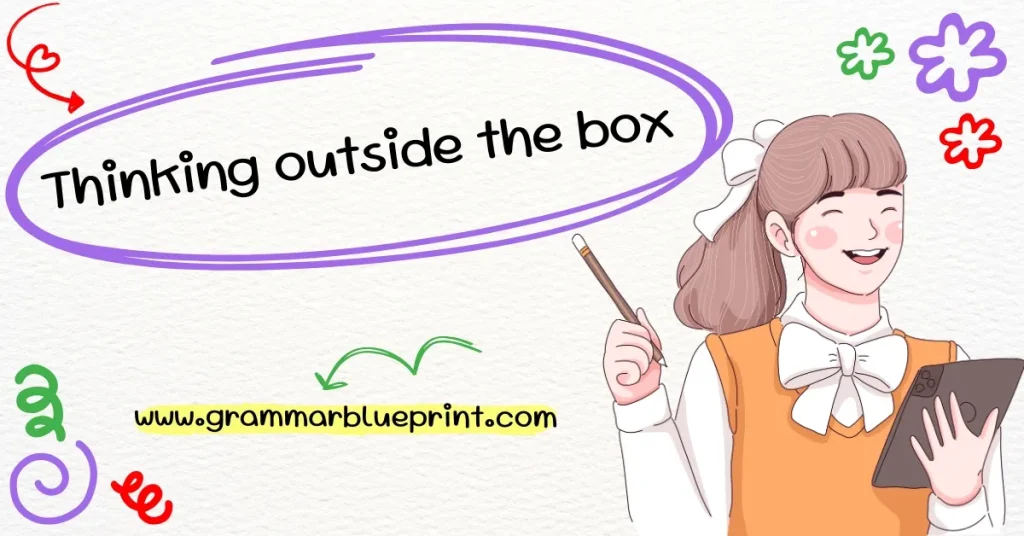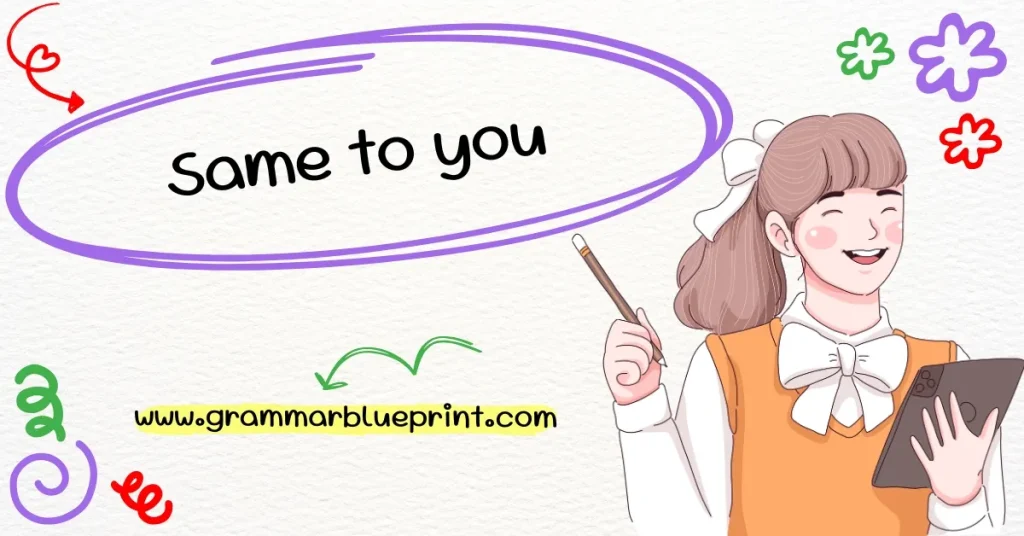“Thinking outside the box” is a popular phrase that encourages individuals to approach problems and situations from new perspectives. It’s about stepping beyond conventional thinking to generate innovative solutions. In this article, we’ll explore what this concept truly means, its benefits, how to get started with thinking creatively, and how to overcome barriers to creative thinking.
What is Thinking Outside the Box?
Thinking outside the box refers to the ability to approach problems or situations in novel, unconventional ways. The term originates from a classic puzzle that involves thinking beyond the limits of a box to find a solution. It’s a metaphor for creativity and innovation in problem-solving.
While traditional thinking may focus on well-trodden paths or existing methods, thinking outside the box encourages breaking free from familiar patterns and seeking alternative approaches. This shift in mindset opens up endless possibilities for finding new solutions to old challenges.
Benefits of Thinking Outside the Box
Thinking outside the box offers numerous benefits, especially in the realms of creativity and problem-solving. Let’s take a closer look at some of these advantages:
- Encourages Innovation and Creativity
When we embrace unconventional thinking, we push the boundaries of our creativity. We stop following the same routines and instead look for new, innovative ways to approach problems. This can lead to breakthroughs that weren’t possible using traditional methods. - Leads to Better Problem-Solving Skills
Creative thinkers are not confined by established norms. This allows them to find unexpected solutions to problems that others might miss. It’s about seeing opportunities where others see obstacles, which can make all the difference in both personal and professional situations. - Improves Adaptability in Challenging Situations
Thinking outside the box also means being able to adapt to new environments. Whether in business, academics, or daily life, this flexibility helps you handle challenges better. Instead of getting stuck on a single solution, you become open to exploring various alternatives. - Boosts Confidence and Independence in Decision-Making
By stepping out of your comfort zone and applying creative problem-solving, you build confidence in your ability to tackle challenges. Over time, you become more independent in making decisions, knowing that you have the tools to come up with fresh and effective solutions.
How to Start Thinking Outside the Box
Now that we understand the importance of creative thinking, how can we begin to apply it in our own lives? Here are some practical tips for getting started:
- Practice Questioning Assumptions
We all have preconceived ideas about how things should work. Begin by questioning these assumptions. Ask yourself, “Why is this the way it is?” and “Is there another way to approach this?” By challenging existing norms, you open the door to new ways of thinking. - Explore Different Perspectives and Approaches
Sometimes, a shift in perspective is all it takes to spark creative ideas. Engage with people who think differently, or try to view the problem from another person’s point of view. The more perspectives you consider, the more likely you are to find unique solutions. - Engage in Activities that Challenge Your Thinking
Activities such as puzzles, games, or creative exercises are great ways to train your brain to think differently. Take time each day to engage in activities that challenge your thinking and encourage you to break free from conventional approaches. - Embrace Failure and Learn from It
One of the key aspects of thinking outside the box is being willing to fail. Many creative solutions come from trial and error. If something doesn’t work out, see it as an opportunity to learn rather than a setback. - Use Brainstorming Techniques and Mind-Mapping
Brainstorming is a powerful tool for generating ideas. Try using mind-mapping to visualize how different ideas connect. Write down everything that comes to mind without judging the ideas. This can help free your mind and lead to unexpected, creative solutions.
Examples of Thinking Outside the Box in Real Life
Successful Companies and Individuals
Many well-known companies owe their success to thinking outside the box. Take Apple, for instance. Their innovative products like the iPhone, iPad, and MacBook redefined entire industries. Instead of following the traditional path, Apple’s creative thinkers looked for ways to simplify and enhance user experience, which ultimately led to groundbreaking technology.
Everyday Examples
Creative thinking doesn’t have to be confined to the world of business. It can also be applied in everyday situations. For example, when trying to organize your time more efficiently, you might come up with a unique scheduling system that works better than the usual time-blocking method. These small but effective solutions often come from thinking outside the box.
Common Barriers to Thinking Outside the Box
While it’s essential to think creatively, several barriers can prevent us from doing so:
- Fear of Failure or Criticism
Many people hesitate to try new ideas because they fear failure or judgment. This fear can trap you in traditional ways of thinking, limiting your potential. It’s important to embrace failure as part of the learning process. - Lack of Motivation or Interest
Sometimes, we lack the drive to explore creative ideas because we’re simply not interested in the task at hand. Finding ways to make the task more engaging or connecting it to something you’re passionate about can help overcome this barrier. - Cultural and Societal Pressures
Cultural norms and societal expectations can discourage unconventional thinking. In many cultures, there’s a strong emphasis on following established rules. However, pushing against these societal pressures is crucial for fostering creativity. - Over-reliance on Traditional Methods or Norms
When you’ve been following the same methods for years, it’s easy to become complacent. Breaking free from these routines and trying new approaches is necessary for thinking outside the box.
How to Overcome Barriers and Foster Creativity
- Shift Mindset: Focus on Possibilities, Not Limitations
A key to unlocking creativity is shifting your mindset from focusing on problems to focusing on solutions. Instead of thinking about why something won’t work, ask yourself how it could work in new ways. - Create a Supportive and Open Environment for Ideas
Encourage creativity by fostering an environment that’s open to new ideas. Whether at work or at home, create a space where people feel comfortable sharing unconventional thoughts without fear of judgment. - Break Routine and Try New Experiences
Routine can stifle creativity. Try to break out of your usual patterns by doing something new or different each day. This could be as simple as trying a new hobby or traveling to a new place. - Develop Habits of Curiosity and Lifelong Learning
Stay curious. Explore new topics, learn new skills, and engage with diverse ideas. Lifelong learning encourages creative thinking by constantly introducing new information and ways of thinking.
Better Alternatives to Say “Thinking Outside the Box”
Sometimes, it’s helpful to use different phrases to describe the concept of thinking outside the box. Here are several alternatives, each with its own nuances:
Thinking Creatively
Meaning: The process of generating novel ideas or solutions.
Scenario Example: “She’s great at thinking creatively when faced with challenges.”
Best Use: Casual discussions about innovation and creativity.
Tone: Positive and encouraging.
Innovative Thinking
Meaning: Using new and original ideas to solve problems or create something.
Scenario Example: “His innovative thinking helped the company break into new markets.”
Best Use: Describing business or technology breakthroughs.
Tone: Professional and forward-thinking.
Unconventional Thinking
Meaning: Approaching problems in ways that break from the usual methods.
Scenario Example: “Her unconventional thinking led to a more effective solution.”
Best Use: Discussing solutions that defy standard practices.
Tone: Neutral, yet appreciative of uniqueness.
Creative Problem-Solving
Meaning: Finding new solutions to challenges.
Scenario Example: “Creative problem-solving is essential when working in fast-paced environments.”
Best Use: When referring to tackling complex issues.
Tone: Practical and solution-oriented.
Breaking the Mold
Meaning: Doing something differently from what is traditionally expected.
Scenario Example: “By breaking the mold, the company introduced a new way of working.”
Best Use: Describing a dramatic change in approach.
Tone: Bold and inspiring.
Pushing the Envelope
Meaning: To go beyond the usual limits, often to achieve something new or more advanced.
Scenario Example: “The research team pushed the envelope by developing a more sustainable energy solution.”
Best Use: Describing efforts to exceed expectations or boundaries.
Tone: Ambitious and forward-thinking.
Rethinking the Status Quo
Meaning: Questioning and changing existing systems or traditions.
Scenario Example: “The company is rethinking the status quo and moving toward a more inclusive workplace.”
Best Use: Talking about revising current practices for improvement.
Tone: Progressive and challenging.
Non-Traditional Thinking
Meaning: Approaching problems or tasks using methods that are different from the norm.
Scenario Example: “Non-traditional thinking led them to create a flexible working model for all employees.”
Best Use: When emphasizing alternative approaches to a typical process.
Tone: Innovative and open-minded.
Out-of-the-Ordinary Thinking
Meaning: Thinking in ways that are not typical or expected.
Scenario Example: “Out-of-the-ordinary thinking helped the design team create an award-winning product.”
Best Use: Describing ideas or solutions that stand out from the usual.
Tone: Creative and unique.
Creative Exploration
Meaning: The process of investigating new ideas or possibilities in a creative manner.
Scenario Example: “The artist’s creative exploration led to a breakthrough in her style.”
Best Use: When discussing the act of experimenting with new ideas or techniques.
Tone: Curious and experimental.
Unorthodox Thinking
Meaning: Thinking that goes against traditional methods or beliefs.
Scenario Example: “Unorthodox thinking in the marketing strategy helped the product reach new audiences.”
Best Use: When referring to approaches that go against conventional wisdom.
Tone: Bold and unconventional.
Reimagining Solutions
Meaning: Thinking of completely new ways to solve old problems.
Scenario Example: “Reimagining solutions helped the team solve a long-standing issue with efficiency.”
Best Use: Describing creative and fresh approaches to problem-solving.
Tone: Innovative and transformative.
Breaking Boundaries
Meaning: Overcoming limits and creating new possibilities.
Scenario Example: “The new software is breaking boundaries by simplifying complex tasks.”
Best Use: When referring to overcoming limitations and creating new opportunities.
Tone: Empowering and disruptive.
Redefining Possibilities
Meaning: Changing the way possibilities are viewed or understood.
Scenario Example: “By redefining possibilities, the company revolutionized the healthcare industry.”
Best Use: When discussing altering traditional perceptions of what is achievable.
Tone: Inspirational and transformative.
Divergent Thinking
Meaning: The ability to generate many different ideas from one starting point.
Scenario Example: “Divergent thinking allowed the team to come up with a wide range of solutions.”
Best Use: Describing processes or activities that encourage generating multiple ideas.
Tone: Open-minded and expansive.
Alternative Thinking
Meaning: Using different approaches or methods to solve a problem.
Scenario Example: “Alternative thinking led the team to an innovative solution that had never been tried before.”
Best Use: When discussing non-traditional approaches to a situation.
Tone: Creative and practical.
Lateral Thinking
Meaning: Solving problems through an indirect and creative approach, often using reasoning that isn’t immediately obvious.
Scenario Example: “Lateral thinking helped them solve a challenging problem by considering options outside the normal scope.”
Best Use: When referring to problem-solving that doesn’t follow a linear progression.
Tone: Analytical and strategic.
Thinking Without Limits
Meaning: Imagining possibilities without being constrained by existing boundaries.
Scenario Example: “Thinking without limits allowed the team to develop a game-changing product.”
Best Use: When discussing expansive and unrestricted creativity.
Tone: Bold and limitless.
Challenging Assumptions
Meaning: Questioning and testing preconceived notions or beliefs.
Scenario Example: “Challenging assumptions led the company to discover more effective ways to meet customer needs.”
Best Use: Describing efforts to challenge established beliefs or practices.
Tone: Thought-provoking and analytical.
Bold Thinking
Meaning: Approaching challenges with a courageous and confident mindset.
Scenario Example: “Bold thinking led the startup to disrupt the market with a unique approach.”
Best Use: When referring to brave or audacious ideas.
Tone: Courageous and assertive.
Expanding Horizons
Meaning: Broadening one’s view or experience by exploring new ideas and perspectives.
Scenario Example: “Expanding horizons in the workplace can lead to new ways of thinking and solving problems.”
Best Use: Describing the process of learning or considering new concepts.
Tone: Inspirational and growth-oriented.
Outside-the-Usual Thinking
Meaning: Approaching situations in ways that break from what’s usually expected.
Scenario Example: “Outside-the-usual thinking allowed them to improve the process by introducing automation.”
Best Use: When referring to creative approaches that break conventional patterns.
Tone: Unique and resourceful.
Non-Linear Thinking
Meaning: Thinking that does not follow a direct or sequential path.
Scenario Example: “Non-linear thinking enabled the team to find an unexpected solution to a problem.”
Best Use: When describing innovative solutions that jump across different perspectives.
Tone: Flexible and innovative.
Visionary Thinking
Meaning: Looking ahead and imagining future possibilities that others may not see.
Scenario Example: “Visionary thinking helped shape the company’s long-term goals.”
Best Use: Describing forward-thinking or strategic planning.
Tone: Ambitious and future-focused.
Unusual Problem-Solving
Meaning: Solving problems in a way that is not conventional or standard.
Scenario Example: “Their unusual problem-solving approach made the team stand out in the industry.”
Best Use: When referring to creative or non-traditional solutions to problems.
Tone: Innovative and unconventional.
Thinking Unconventionally
Meaning: Using ideas or methods that are different from the norm.
Scenario Example: “Thinking unconventionally helped the company stand out from competitors.”
Best Use: When emphasizing unique or untraditional ways of thinking.
Tone: Bold and innovative.
Creative Mindset
Meaning: A way of thinking that encourages creativity and fresh ideas.
Scenario Example: “Adopting a creative mindset helps individuals come up with out-of-the-box solutions.”
Best Use: Describing the mental attitude that encourages innovation.
Tone: Motivating and empowering.
Innovative Problem-Solving
Meaning: Using new and original methods to solve problems.
Scenario Example: “Innovative problem-solving led to the rapid development of a new software tool.”
Best Use: When referring to practical and creative methods for addressing challenges.
Tone: Practical and solution-focused.
Out-of-the-Box Ideas for Success
Meaning: Unique and unconventional ideas that lead to achieving success.
Scenario Example: “Out-of-the-box ideas for success helped the team turn a failing product into a bestseller.”
Best Use: Discussing unique strategies for achieving goals.
Tone: Motivating and encouraging.
Thinking Beyond the Box
Meaning: Going beyond traditional ways of thinking to explore new possibilities.
Scenario Example: “Thinking beyond the box led the designer to create a groundbreaking product.”
Best Use: When referring to creative thinking that challenges traditional boundaries.
Tone: Forward-thinking and creative.
How to Encourage Team Collaboration for Creative Ideas
To foster creativity in teams, open communication and diverse perspectives are key:
- Foster Open Communication
Encourage team members to share ideas freely. Create an environment where everyone feels comfortable expressing their thoughts. - Value Diverse Perspectives
Different backgrounds and experiences bring unique ideas. Embrace diversity in your team to fuel creative thinking. - Implement Team Brainstorming Sessions
Schedule regular brainstorming sessions where all team members contribute their ideas. This collaborative effort often leads to creative breakthroughs.
Use Collaborative Tools for Idea-Sharing
Leverage digital tools like Google Docs or Trello to organize ideas and collaborate in real time. These tools help streamline communication and make idea-sharing more efficient.



